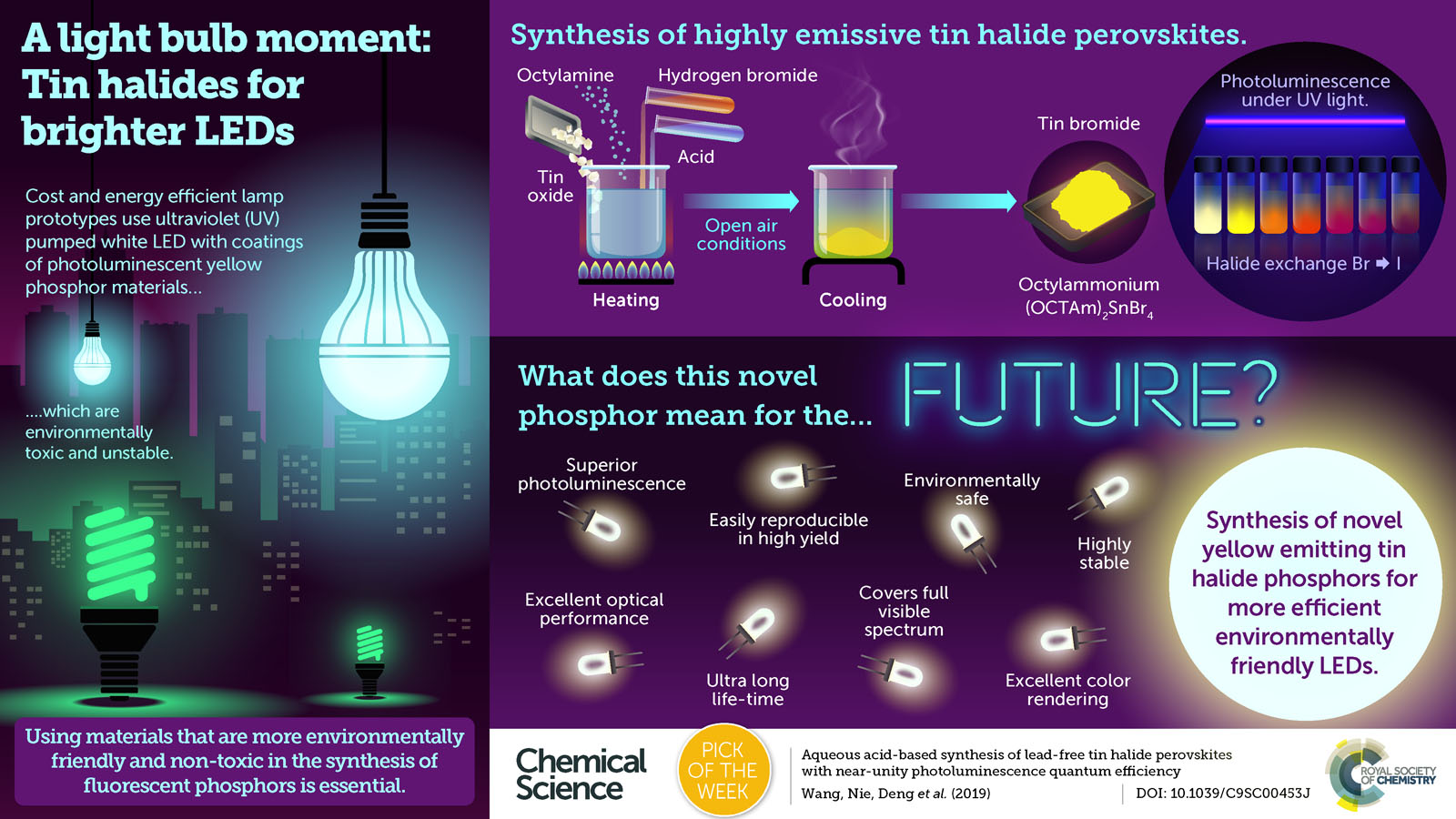A light bulb moment
ChemSci Pick of the Week
Professor Zhengtao Deng and his team from Nanjing University in China have developed a new photoluminescent material that could be used to make more efficient and environmentally friendly LEDs.

Picture: © Royal Society of Chemistry/Editage
Photoluminescence is the property whereby a material absorbs light and then re-emits it over a period of time. 'Glow-in-the-dark' products are an example of photoluminescence.
"Luminous phenomena can be seen everywhere in nature, from glowing jellyfish in the ocean to fireflies in the mountain forest, from the lighting fixtures we use every day to the backlight modules in our mobile phones and laptops", says Professor Deng.
The new materials were made from tin halides, and their colour can be tuned between yellow and red by changing the halide composition. They have an efficiency of almost 100% – meaning they emit almost as much light as they absorb.
The authors believe that the tin halides could be used in LEDs in people’s daily lives within 5 to 10 years – bringing advantages such as lower energy consumption and more realistic display technologies.
This article is free to read in our open access, flagship journal Chemical Science: Jinlan Wang, Shuming Nie, Zhengtao Deng et al., Chem. Sci., 2019, Advance Article. DOI: 10.1039/C9SC00453J. You can access our 2019 ChemSci Picks in this article collection.
Read more like this